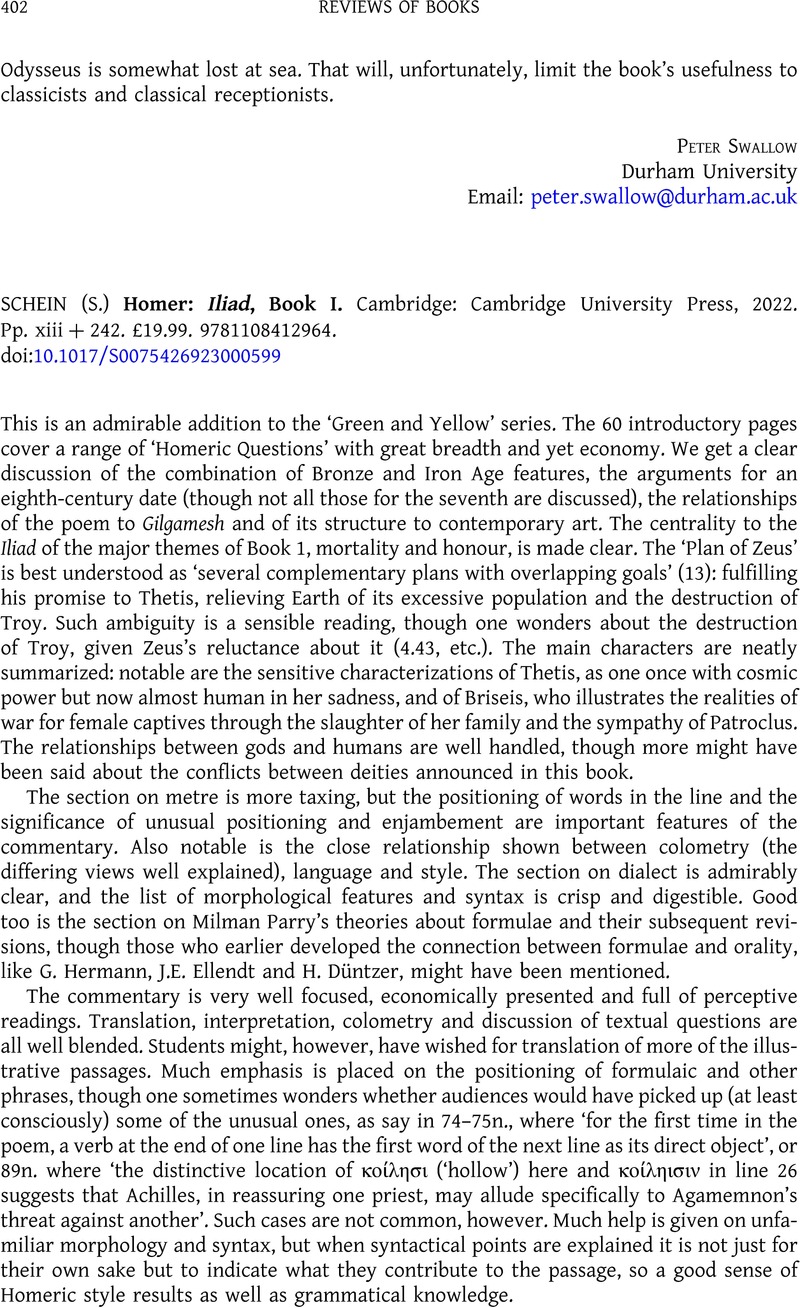No CrossRef data available.
Article contents
(S.) SCHEIN Homer: Iliad, Book I. Cambridge: Cambridge University Press, 2022. Pp. xiii + 242. £19.99. 9781108412964.
Review products
(S.) SCHEIN Homer: Iliad, Book I. Cambridge: Cambridge University Press, 2022. Pp. xiii + 242. £19.99. 9781108412964.
Part of:
Literature
Published online by Cambridge University Press: 25 October 2023
Abstract
An abstract is not available for this content so a preview has been provided. Please use the Get access link above for information on how to access this content.

- Type
- Reviews of Books: Literature
- Information
- Copyright
- © The Author(s), 2023. Published by Cambridge University Press on behalf of the Society for the Promotion of Hellenic Studies


